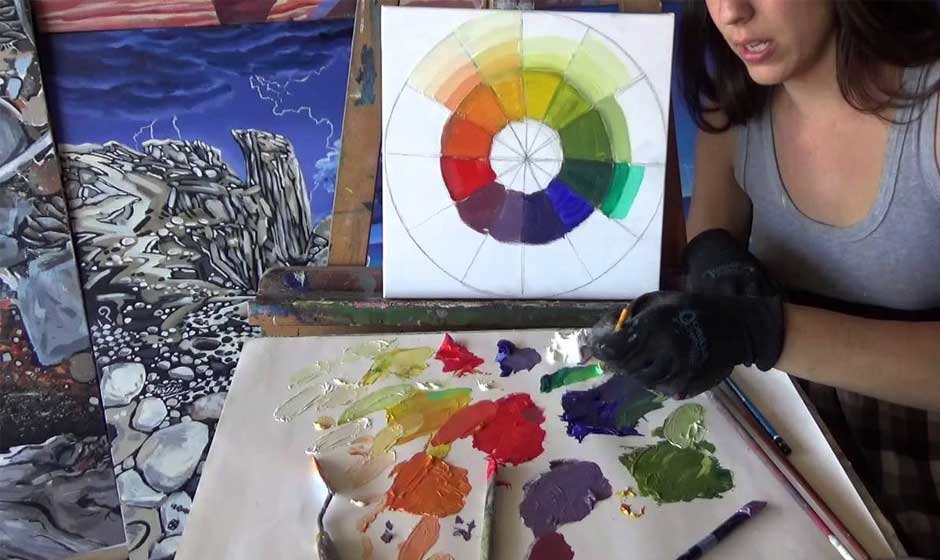As an artist, you know that the way you blend and adjust texture directly affects the outcome of your painting. But the process can be more challenging than it seems. It requires patience, practice—especially if you’re just learning the medium—, and an understanding of the materials you’re working with. But knowing how to mix oil paint properly ensures your colors stay true, your brushwork flows effortlessly, and your painting has the lasting quality you desire.
What is the paint’s composition?
Oil paint consists of pigments suspended in a binder, typically linseed oil. The pigment gives the paint its color, while the binder allows it to spread smoothly and adhere to the canvas. Different pigments and oils can behave differently—some may dry faster, while others might take days to fully set. Understanding the properties of the oil paint you want to use for your art helps you anticipate how the paint will behave on your canvas and how to handle it properly.
Which essential tools do you need?
The most essential tools are a palette, palette knives, and brushes. A flat palette is best for mixing as it gives you enough space to create a broad range of hues. The knives are perfect for thoroughly blending, and a brush can be used for quick mixing—but make sure you don’t cross-contaminate your colors. This is especially important if you want to preserve specific tones. Otherwise, you might end up with inconsistent or muddy colors that won’t give you the vibrancy you’re aiming for.
What is the mixing process?
Once you’re familiar with your materials, it’s time to master mixing. Start with a limited palette of primary colors—red, blue, and yellow. This forces you to understand how to create secondary and tertiary ones and how they interact.
When mixing, be mindful of the ratio of pigment to oil. Adding more oil will make your mixture thinner and more translucent, while using more pigment will create a thicker, more opaque texture. To avoid dull or muddy hues, use complementary paints to adjust tones. For example, mix a bit of green into red to cool down a warm nuance.
How can mediums and solvents be incorporated?
Oil paints don’t work alone. Mediums and solvents are key to controlling the texture and drying time. Linseed oil, for example, can thin your paint while also increasing its gloss. Liquin is another medium that speeds up drying time. Solvents like turpentine help you clean brushes and adjust the consistency of the paint. However, remember the “fat over lean” rule: each successive layer of paint should contain more oil than the layer beneath it. This ensures proper drying and helps prevent cracking.
Are there common mixing issues?
As with any skill, mixing oil paint also comes with its fair share of challenges. You might struggle with overly thick paint or end up with tones that don’t end up the way you intended. If your paint is too thick, try adding a little solvent to thin it out. On the other hand, if your paint is too runny, use more pigment or a thicker medium like beeswax or linseed oil. If your colors are muddy, take a step back and evaluate your mixing ratios, making sure you’re using the right proportions.










